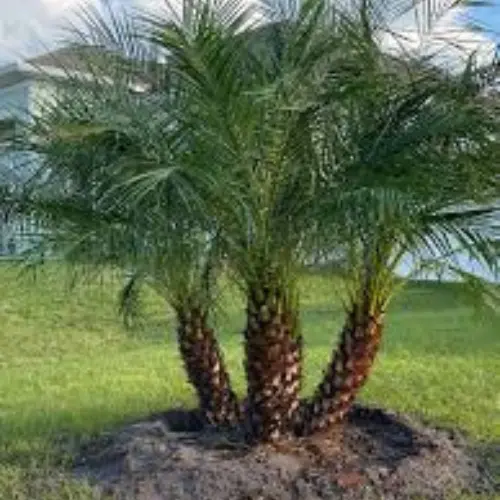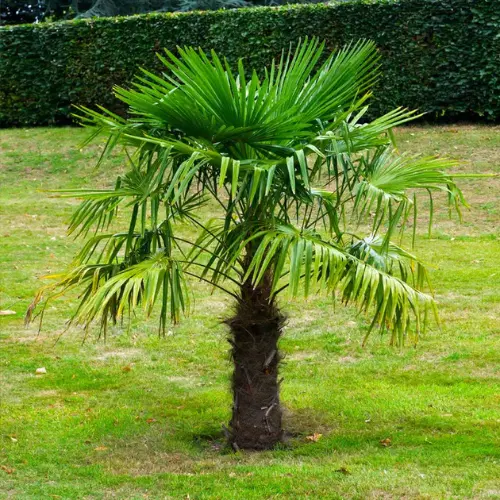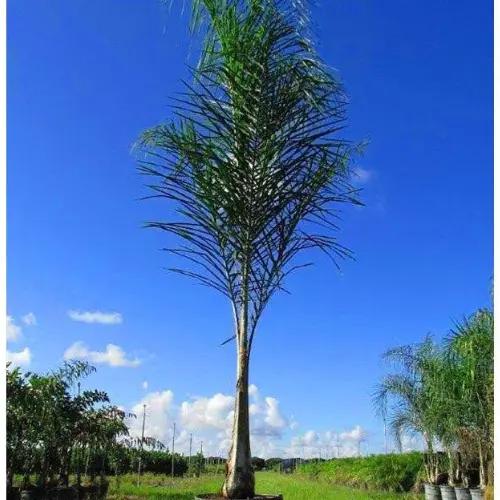Introduction
Palm trees instantly bring a sense of relaxation, exotic charm, and elegance to any outdoor space. Whether you live in a warm coastal region or want a tropical touch in a temperate zone, there’s a palm species suited to your backyard. In this guide, you’ll learn which types of palm trees are best for landscaping, how to arrange them in a garden layout, and how to care for them all year round.
Why Choose Palm Trees for Your Backyard?
Palms are more than ornamental plants—they create atmosphere. Their towering trunks, feather-like fronds, and swaying movement in the breeze evoke the calm of beach resorts and Mediterranean courtyards.
Benefits of using palm trees:
- Instantly create a tropical or desert-style garden
- Low maintenance (for many varieties)
- Ideal for poolside areas, patios, or modern garden designs
- Work well in pots or open ground
- Many are cold-hardy and adaptable
Best Palm Trees for Backyard Landscaping
1. Pygmy Date Palm (Phoenix roebelenii)
- Height: 6–10 ft
- Ideal for: Small spaces and containers
- Look: Elegant, soft fronds
- Needs: Filtered light and well-drained soil

2. Windmill Palm (Trachycarpus fortunei)
- Height: 10–25 ft
- Ideal for: Cold climates (hardy to -15°C / 5°F)
- Look: Fan-shaped leaves and rough trunk
- Needs: Part sun to full sun, well-drained soil

3. Queen Palm (Syagrus romanzoffiana)
- Height: 30–50 ft
- Ideal for: Tall accent or entryway feature
- Look: Graceful arching fronds
- Needs: Full sun, frequent watering

4. Sago Palm (Cycas revoluta) (technically not a true palm)
- Height: 3–6 ft
- Ideal for: Containers and borders
- Look: Stiff fronds, slow-growing
- Needs: Bright indirect light, good drainage
5. Mediterranean Fan Palm (Chamaerops humilis)
- Height: 6–15 ft
- Ideal for: Clustered planting or poolside tropical style
- Look: Clumping growth, hardy structure
- Needs: Full sun, drought-tolerant once established
Design Tips: How to Layout Palm Trees in Your Garden
To get the most visual impact from your palms, layout and spacing are key.
Layout strategies:
- Place taller palms as backdrops or near fences
- Use smaller palms in groups for a lush, layered look
- Create a palm “island” with mulch and underplanting (like agave or ornamental grasses)
- Mix in decorative lighting for evening ambiance
- Frame paths or entries with symmetrical palm pairings
How to Care for Palm Trees
Palms are relatively easy to grow but still need the right conditions.
Basic care checklist:
- Watering: Keep soil moist but not soggy, especially during first year
- Feeding: Use slow-release palm fertilizer (high in potassium and magnesium)
- Mulching: Maintain moisture and prevent weed growth
- Pruning: Only remove brown or dead fronds—don’t over-prune
- Winter care: For non-hardy palms, protect roots with mulch and wrap trunk if needed
🌞 Bonus tip: Avoid overwatering in cooler months to prevent root rot.
Can You Grow Palm Trees in Pots?
Absolutely! Many dwarf palms thrive in containers and can be moved indoors during winter.
Container palm favorites:
- Pygmy Date Palm
- Sago Palm
- Lady Palm (Rhapis excelsa)
- Areca Palm (Dypsis lutescens)
✔️ Use large pots with drainage holes and elevate slightly to improve airflow.
Conclusion
Palm trees are a versatile and visually striking addition to any backyard. Whether you’re going for a tropical resort feel, a modern minimalist vibe, or a desert oasis, there’s a palm species and layout to match your vision. With the right care and design, you can enjoy the graceful beauty of palms year-round—no vacation needed.
For detailed information on palm species, you can visit the Palm Guide from the International Palm Society.




Pingback: How to Draw Palm Trees: Easy Step-by-Step Guide